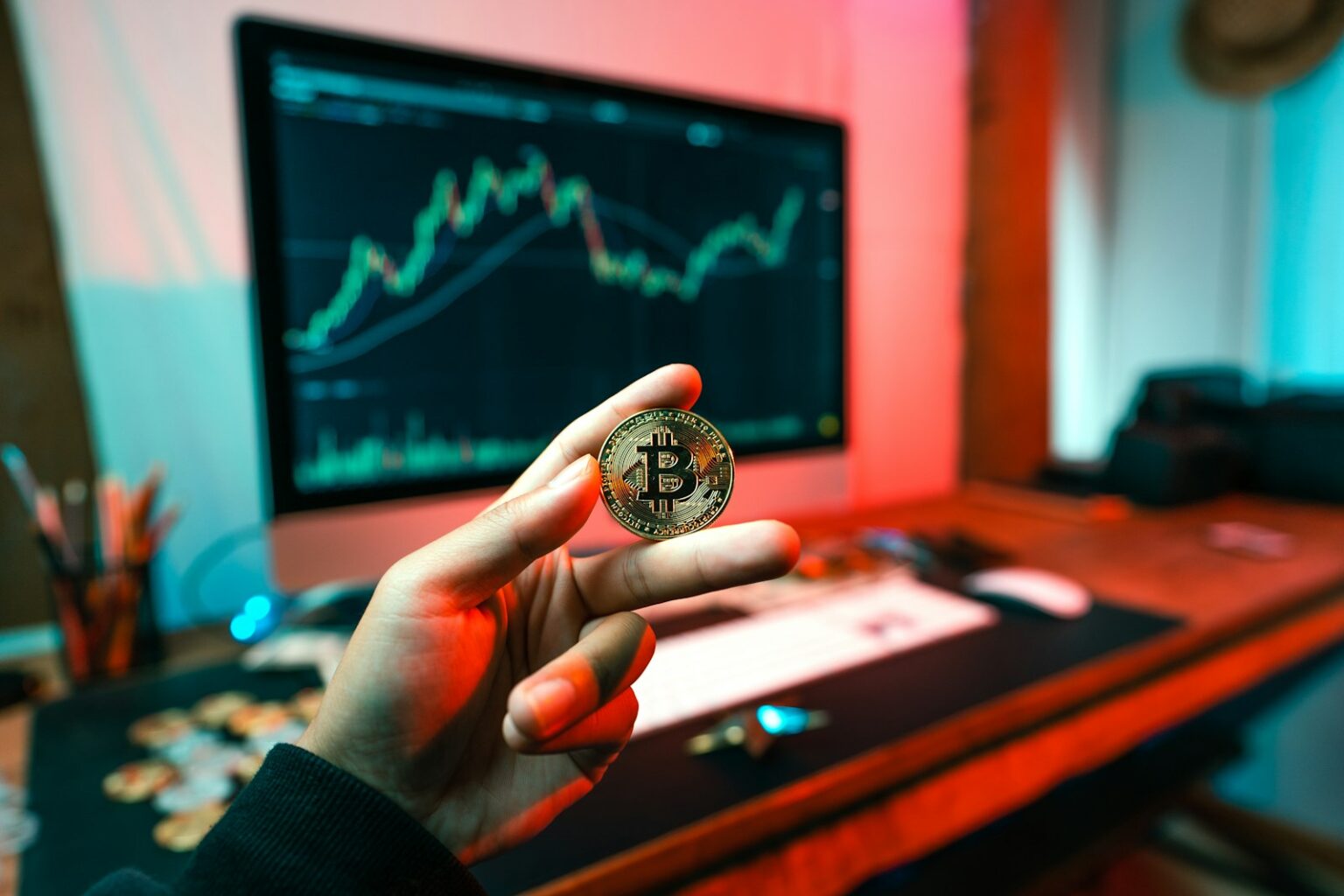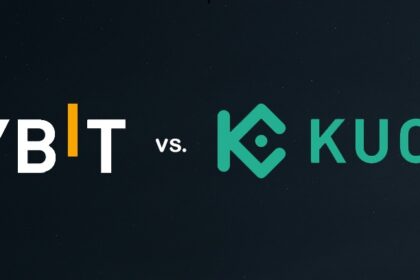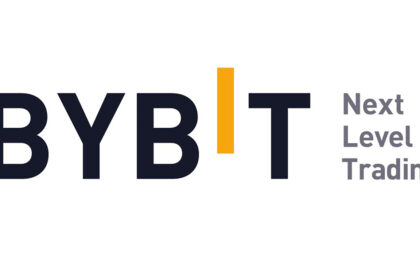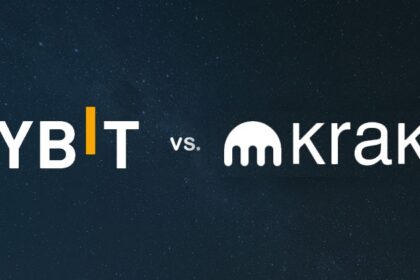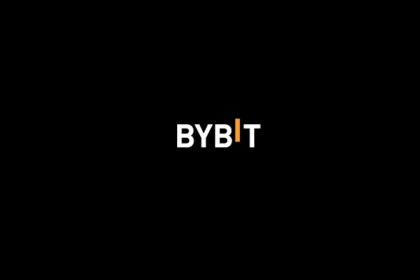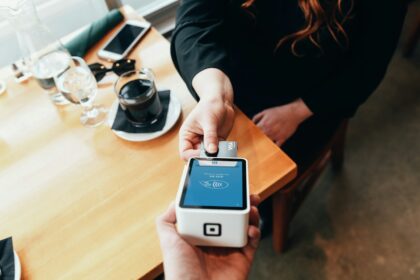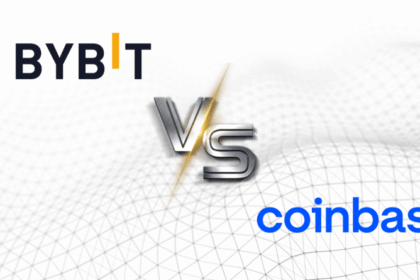Welcome to the world of cryptocurrency trading. You have probably heard about Bitcoin, Ethereum, and other digital assets. People buy and sell them, hoping to make a profit. But there is a more advanced way to trade called margin trading.
This guide will explain what margin trading is in simple terms. We will show you the risks and rewards. Most importantly, we will help you find the best crypto margin trading exchanges available today. This is a long guide, but it is important to understand these topics before you risk your money.
What is crypto margin trading?
Imagine you want to buy a house, but you only have 20% of the money. You go to a bank, and the bank lends you the other 80%. You buy the house, and if its value goes up, you make a large profit on your small initial investment.
Margin trading in crypto is very similar. It is a method of trading that allows you to borrow funds from the exchange to make a much larger trade than you could with your own money.
This “loan” is called leverage.
Let’s use a simple example. Say you have $100. On a normal (spot) exchange, you can buy $100 worth of Bitcoin. If Bitcoin’s price goes up by 10%, your $100 worth of Bitcoin is now worth $110. You made $10.
Now, let’s try margin trading. You have $100, but you use 10x leverage. The exchange lends you 9 times your amount, adding $900 to your $100. You now control a position worth $1,000.
If Bitcoin’s price goes up by 10%, your $1,000 position is now worth $1,100. You pay back the $900 loan, and you are left with $200. Your initial $100 has doubled. You made a $100 profit, not just $10.
This sounds amazing, right? But it has a very dangerous downside.
The big risk: Liquidation
What if the price goes down? Let’s use our 10x leverage example again. You have a $1,000 position. If Bitcoin’s price drops by 10%, your position is now worth only $900. This $900 is the exact amount you borrowed from the exchange.
The exchange will not let you lose its money. The moment your position’s value drops to the loan amount, the exchange automatically closes your trade. This is called liquidation. You lose your entire initial $100. Not just 10% of it, but 100% of it. All gone.
The more leverage you use (e.g., 50x or 100x), the smaller the price movement needed to liquidate you. With 100x leverage, a price move of just 1% against you can wipe out your entire position.
This is why choosing one of the best crypto margin trading exchanges is so important. A good exchange will have a stable trading engine, fair liquidation mechanisms, and high liquidity to prevent sudden, unfair price crashes (often called “scam wicks”).
How to choose a margin trading exchange
When looking for a platform, you must be very careful. Here are the most important factors to consider.
- Security: This is number one. Does the exchange use cold storage for funds? Does it offer Two-Factor Authentication (2FA)? Does it have an insurance fund to protect users from platform failures?
- Liquidity: This means there are many buyers and sellers at all times. High liquidity means you can open and close large positions without causing the price to move dramatically (this is called ‘slippage’).
- Fees: Margin trading involves several fees.
- Trading Fees (Maker/Taker): A ‘taker’ order (market order) usually has a higher fee than a ‘maker’ order (limit order).
- Funding Rates: Because you are trading with borrowed money, you often have to pay (or receive) an interest rate every few hours. This is the ‘funding rate’.
- Leverage Offered: How much leverage does the exchange offer? While 100x leverage sounds exciting, it is extremely risky. Most professional traders use 2x to 10x leverage.
- User Interface (UI): Is the platform easy to understand? A confusing layout can cause you to make expensive mistakes.
- Asset Variety: Can you only trade Bitcoin, or does it offer margin trading on many different altcoins?
- Customer Support: If something goes wrong (like a stuck withdrawal), you need access to fast and helpful customer support, 24/7.
- Regulation: Is the exchange allowed to operate in your country? Many margin exchanges are not available in certain locations like the USA or UK due to strict regulations.
Top list: Best crypto margin trading exchanges
After analyzing all the factors, we have compiled a list of the top platforms. Here are our reviews for the best crypto margin trading exchanges on the market.
1. Bybit
Bybit is widely regarded as one of the best platforms specifically designed for derivatives and margin trading. It has grown incredibly fast because of its powerful trading engine, excellent user interface, and high liquidity.
One of Bybit’s key features is its no-overload engine. While other exchanges sometimes freeze or crash during high volatility (exactly when you need to close a trade), Bybit’s engine is built to handle massive trading volumes. This reliability is critical for margin traders.
Bybit offers up to 100x leverage on Bitcoin and up to 50x (or more) on other popular assets like Ethereum. It also has a “Dual-Price Mechanism” which helps protect traders from unfair liquidations caused by market manipulation on a single exchange.
Their fee structure is very competitive, often rewarding ‘makers’ with a rebate (getting paid to trade) while charging ‘takers’ a small fee. They also have a large insurance fund to cover any losses that are not the fault of the user.
Bybit Exchange
Our #1 pick for margin trading. Known for its high performance, low fees, and user-friendly platform for derivatives.
- ✅ Powerful & reliable trading engine.
- ✅ Bonus up to $30,050
- ✅ Competitive fees (maker rebates).
- ✅ Excellent UI and mobile app.
- ✅ Strong focus on security.
Register on Bybit Global Now and get bonuses
Are you from the European Union?
Bybit has also expanded its services to include spot trading, an NFT marketplace, and various ‘Earn’ products, making it a more complete ecosystem. However, its heart remains in derivatives trading, which is why it tops this list for margin traders.
(Tip): Bybit has different versions and rules depending on your location. For example, users in the European Union (EU) may have different services or KYC requirements than users in other parts of the world. Always check the rules for your specific region.
Special Bybit Registration Bonuses
Use our referral codes for the best welcome bonuses. Choose the correct link for your region.
For Global Users (Outside EU)
If you live outside the European Union.
Referral Code: BYBIT31
Positives:
- High performance engine
- Great liquidity
For European Union (EU) Users
If you live inside the European Union.
Referral Code: BYBIT3K
Positives:
- Fully compliant with EU regulations
- Excellent mobile app
Global Users: Don’t Miss Out!
Get the best rewards with code BYBIT31.
Positives:
- Low trading fees
- 24/7 customer support
EU Users: Get Your Bonus!
Use code BYBIT3K for EU-specific rewards.
Positives:
- Strong security features
- Wide range of ‘Earn’ products
2. Binance
Binance is the 800-pound gorilla of the crypto world. It is the largest cryptocurrency exchange by trading volume, and it offers… well, everything. Spot trading, margin trading, futures, NFTs, launchpads, savings accounts, and more.
When it comes to margin trading, Binance is an excellent choice simply due to its massive liquidity. On major pairs like BTC/USDT, you can trade huge amounts without affecting the price. It offers a massive selection of assets available for margin trading, far more than most competitors.
Binance offers both Cross Margin (using your whole account as collateral) and Isolated Margin (risking only a specific position). It offers leverage up to 125x on its Futures platform, although its standard margin trading is typically lower.
The main downside? Binance can be overwhelming for a new user. There are so many options, menus, and features that it can be confusing. It has also faced significant regulatory scrutiny worldwide, which has led to it being banned or restricted in several countries.
However, for those who want an all-in-one platform, Binance is hard to beat. Its SAFU (Secure Asset Fund for Users) is a massive insurance fund that protects users, which adds a strong layer of trust. This is why it’s a solid, if slightly less specialized, choice in our list of best crypto margin trading exchanges.
Binance Exchange
The world’s largest exchange. An all-in-one ecosystem with massive liquidity and a huge variety of assets.
- ✅ Unmatched liquidity.
- ✅ Widest selection of trading pairs.
- ✅ SAFU insurance fund for user protection.
- ⛔ Can be very complex for beginners.
3. OKX
OKX (formerly OKeX) is another powerhouse in the crypto trading space, especially popular in Asia but with a strong global presence. It competes directly with Bybit and Binance, offering a very robust platform for both spot and derivatives trading.
OKX provides a unified account system that is quite sophisticated. It allows traders to manage their funds across different trading types (spot, margin, futures) more efficiently. For margin traders, it offers high leverage, deep liquidity, and a wide range of assets.
One of its standout features is its risk management system. OKX uses advanced algorithms to help prevent liquidations and offers tools for traders to manage their risk more effectively. It also has a strong reputation for security, with a ‘Proof-of-Reserves’ system that shows users that the exchange holds their assets 1:1.
The platform can feel a bit more “professional” and less “beginner-friendly” than Bybit, but for serious traders, it provides all the advanced charting tools and order types one could need. Its fees are also highly competitive.
4. KuCoin
KuCoin is often called “The People’s Exchange.” It gained its reputation by listing a huge number of new, smaller altcoins before they became popular. This makes it a favorite for “gem hunters.”
When it comes to margin trading, KuCoin offers a surprisingly robust service. It allows margin trading on a very wide selection of its listed assets, not just the big-name coins. This gives traders the unique opportunity to use leverage on more speculative, high-volatility altcoins (which is, of course, extremely high-risk).
KuCoin offers up to 10x leverage on its margin trading platform. While this is less than other exchanges, it is often a much safer amount for most traders. The interface is relatively simple and easy to understand. KuCoin also has a popular ‘trading bot’ feature, which allows users to automate their trading strategies.
The main drawback is that its liquidity on some of these smaller altcoin pairs can be thin. This means a large margin trade could cause significant slippage. For major pairs, however, its liquidity is perfectly fine. It’s a great platform for those who want to move beyond Bitcoin and Ethereum.
A quick comparison of top exchanges
Here is a simple table to help you compare our top choices. (Note: Fees and leverage can change, so always check the exchange’s official website).
| Exchange | Max Leverage (BTC) | Approx. Taker Fee | Best For… |
|---|---|---|---|
| Bybit | 100x | ~0.06% | Serious Derivatives Traders |
| Binance | 125x (Futures) / 10x (Margin) | ~0.1% (less with BNB) | All-in-One Ecosystem |
| OKX | 100x | ~0.05% | Professional Traders / Tools |
| KuCoin | 10x | ~0.1% | Altcoin Margin Trading |
Important margin concepts explained simply
The best crypto margin trading exchanges will require you to understand a few key terms. Here they are, explained simply.
Isolated margin vs. cross margin
This is a very important setting you must choose before opening a trade.
- Isolated Margin: Imagine you have $1,000 in your account. You decide to make a margin trade using $100. In isolated mode, you are ONLY risking that $100. If the trade goes badly, you get liquidated and lose your $100, but the other $900 in your account is safe. This is highly recommended for beginners.
- Cross Margin: In this mode, the exchange uses your entire account balance ($1,000) as collateral to keep your trade open. This means your liquidation price is much further away, giving your trade more room to “breathe.” BUT, if the price moves against you far enough, you can be liquidated and lose your entire $1,000 account, not just the $100 you intended to trade with. This is for advanced users only.
Maker, taker, and fees
You will see “Maker” and “Taker” fees mentioned.
- Taker: You are a ‘taker’ when you place an order that is filled immediately. This is usually a “Market Order.” You are “taking” liquidity from the order book. Takers usually pay a higher fee.
- Maker: You are a ‘maker’ when you place an order that is not filled immediately. This is usually a “Limit Order” (e.g., “Buy Bitcoin when the price drops to $50,000”). Your order sits in the order book, “making” liquidity. To encourage this, exchanges give makers a lower fee, or sometimes even a rebate (they pay you!).
(Tip): Professional traders almost always trade using limit orders to be ‘makers’ and save money on fees. Over hundreds of trades, this makes a huge difference.
Funding rates
This is a core concept of “perpetual futures,” which are the most common type of margin trade. Because these contracts never expire, the exchange needs a way to keep the contract price in line with the actual (spot) price of the asset.
They do this with a funding rate. It is a small payment that is exchanged between traders every 8 hours (usually).
- If the funding rate is positive: The contract price is higher than the spot price. This means traders who are “long” (betting the price will go up) must pay traders who are “short” (betting the price will go down).
- If the funding rate is negative: The contract price is lower than the spot price. Shorts pay longs.
Why does this matter? If you plan to hold a margin position for several days or weeks, these funding payments can add up to a significant cost (or profit!). Always check the funding rate before entering a trade.
The massive risks of margin trading: A final warning
This article would be irresponsible if it did not end with a strong warning. Margin trading is the fastest way to lose all your money in cryptocurrency. It is far riskier than simply buying and holding.
- Extreme Volatility: Crypto prices can move 10-20% in a single hour. On 10x leverage, that is a 100-200% loss, liquidating you instantly.
- Flash Crashes: Sometimes, the price on a single exchange will suddenly crash for a few seconds. This “scam wick” can be enough to liquidate thousands of traders before the price instantly recovers. Choosing one of the best crypto margin trading exchanges with good liquidity helps protect against this, but the risk is never zero.
- Psychological Pressure: Watching your leveraged position swing up and down by thousands of dollars is incredibly stressful. It leads to bad, emotional decisions, like “revenge trading” after a loss.
- You Are Trading Against Professionals: You are not just trading against other beginners. You are trading against giant hedge funds and professional traders with advanced algorithms and millions of dollars.
(Tip): Before you trade a single real dollar, use the “Demo Account” or “Testnet” feature that most top exchanges (like Bybit) offer. This lets you practice margin trading with fake money in a real market environment.
Conclusion: How to choose what’s right for you
Margin trading is a powerful tool. It can amplify your gains, but it will also amplify your losses. It is not for everyone, and it is certainly not for beginners.
Your choice of platform is your first and most important line of defense.
- If you are a serious trader who values speed and reliability above all, Bybit is likely your best choice.
- If you want an all-in-one platform with the highest liquidity and the most coin-related services, Binance is the answer.
- If you want to use margin on smaller, more obscure altcoins, KuCoin is a great place to look.
Do your own research. Start small. Use low leverage (or none at all). And never, ever trade money you cannot afford to lose completely. Finding the best crypto margin trading exchanges is just the first step on a very long and difficult journey.
Frequently asked questions (FAQ)
1. What is crypto margin trading in the simplest terms?
It is borrowing money from an exchange to make a bigger trade. If you have $100 and use 10x leverage, you are trading with $1,000 ($100 of yours, $900 borrowed). Your potential profits are 10x bigger, but your potential losses are too.
2. What is leverage?
Leverage is a multiplier for your money. 5x leverage means you are trading with 5 times your own capital. 100x leverage means you are trading with 100 times your capital. The higher the leverage, the higher the risk.
3. What is liquidation?
This is when the exchange automatically closes your trade at a loss to ensure you don’t lose the money you borrowed. If the market moves against you by a certain percentage, you get “liquidated,” and you lose your initial investment (your “margin”).
4. Is Bybit a good exchange for margin trading?
Yes, Bybit is considered one of the best crypto margin trading exchanges, especially for derivatives. It is known for its fast and reliable trading engine (it doesn’t crash during busy times), low fees, and user-friendly interface for traders.
5. Is Binance safe for margin trading?
Binance is one of the largest and most secure exchanges. It has massive liquidity (lots of buyers and sellers) and a large insurance fund called SAFU to protect users. It is a very safe and reliable option, though its platform can be complex for new users.
6. What is the Bybit referral code for a bonus?
The referral code depends on your location.
• For users in the European Union (EU), use the code BYBIT3K.
• For Global users (outside the EU), use the code BYBIT31.
Using these codes when you sign up will give you access to the best welcome bonuses and rewards.
7. Can I do margin trading in the USA?
This is difficult. Due to very strict regulations, most global exchanges like Bybit and Binance do not offer margin trading services to users in the United States. US-based traders must use specific, regulated US exchanges (like Kraken), which may offer margin trading with much lower leverage.
8. What is the difference between Isolated and Cross Margin?
Isolated Margin risks only the money you put into a single trade. If you get liquidated, you only lose that amount. Cross Margin uses your entire account balance as collateral for all your trades. It’s riskier because one bad trade can potentially liquidate your entire account.
9. What are funding rates?
Funding rates are small payments made between long and short traders (usually every 8 hours) to keep the margin contract price close to the real-time (spot) price. Depending on the market, you might have to pay this fee, or you might receive it. It’s an important “cost of holding” a position long-term.
10. What is the biggest risk of margin trading?
The biggest risk is liquidation. Because you are trading with borrowed money, a small price movement against you can be magnified and cause you to lose 100% of your initial investment very quickly. Never trade more than you are willing to lose.


